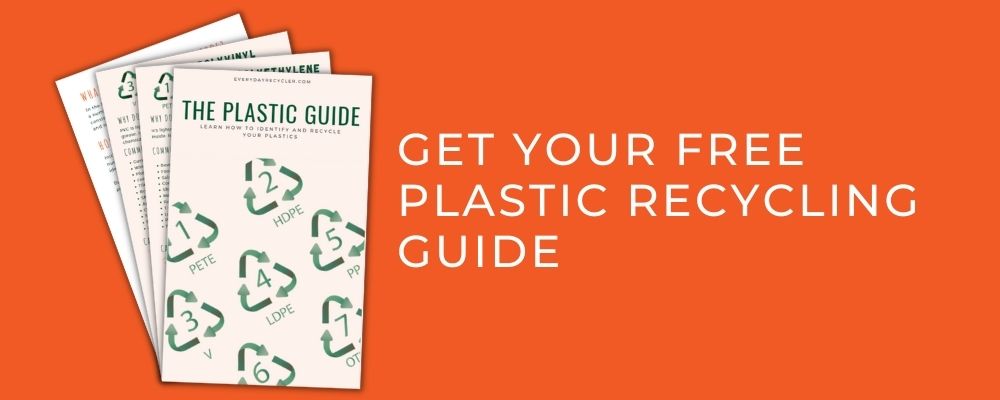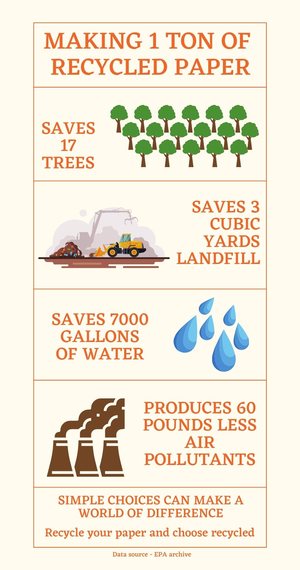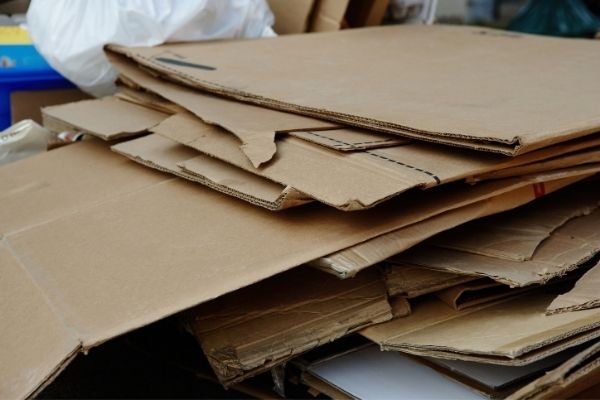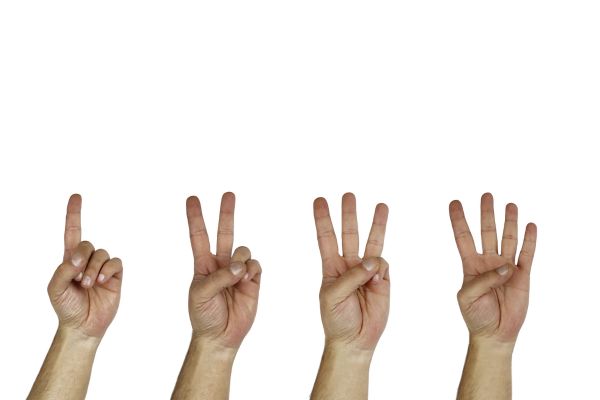Recycling cardboard and paper is a relatively straightforward process and can save trees, energy, water, and landfill space. Therefore it is crucial that we make sure to recycle as much as we can.
It’s surprising how much paper and cardboard we still use despite our dependence on electronic devices these days. In the USA, the average American uses 7 trees worth of paper each year; that’s 2 Million trees a year. In Australia, they still consume almost 230kg of virgin paper per person per year. A total of 1.9 million tonnes of that paper and cardboard goes to landfill every year.
Take a closer look at recycling paper and cardboard? Read on to find out what goes in your curbside bin and what stays out. How to minimize contamination and what sort of products contain recycled paper or cardboard.

Quick Navigation
Why Recycle Cardboard and Paper?
Every tonne of paper you recycle will save natural resources, energy, water, and of course, trees. It will also reduce the amount of material that ends up in landfill.

There are generally two important factors when it comes to recycling cardboard or paper. They are the type of paper and whether there is any contamination.
Type of paper
There are many different types of paper with many different sizes, weights, thicknesses, and finishes. Some types have been treated with coatings or layered with other materials to create laminates. To ensure quality, only certain types of paper and cardboard can be recycled. Coated and treated paper such as wax paper or liquid paperboards cannot easily be recycled and contaminate other paper recycling.
Contamination
Contamination can occur from two different sources. Either because the wrong type of paper was included, refer above, or a result of other items in the recycling. We often talk about how important it is to empty containers before putting them in the recycling bin. It helps protect the other materials in your recycling bin. Liquids can spill out and contaminate other recyclables like paper and cardboard recycling.
The Paper and Cardboard Recycling Process
Once your curbside recycling program collects the paper, it is taken to a sorting facility. Here, paper and cardboard need to be separated from other recyclables like plastic, steel, and glass. Nest the paper is transported to a re-processing facility where it is separated into its different types. The usable paper is put through the recycling process and made into new products.
Here’s a great video by Domtar on the paper and cardboard recycling process.
Paper can be usually be recycled 5 to 7 times. However, every time it’s recycled, the fibers will become shorter, and the paper product’s quality will be lower. Towards the very end of this lifecycle, the fibers are too short to be recycled again. This material is usually used to make newspapers and egg cartons. So let’s all do our bit and recycle as much as we can.
How to Recycle Paper and Cardboard
What can and can’t be recycled when it comes to paper and cardboard recycling. Below we list the items that can and cannot be recycled in most curbside recycling programs.
There are a few other things you can do to make sure your paper and cardboard get’s recycled. You can help paper and cardboard recycling by ensuring your bottles and cans are empty of liquids before putting them in the curbside recycling bin. When paper or cardboard gets wet it can reduce the quality of the fibers and decrease the recyclability.
Contamination can also occur because of the dual-stream recycling that many of us have for our curbside recycling programs. The inclusion of glass in mand of these multi-streams can lead to broken glass shards contaminating the paper, which leads to issues at the paper mill.
This is why, in some places, glass is collected as a separate recycling stream.
Read on for our how to recycle lists of what can and can’t be recycled when it comes to paper and cardboard.
What Goes In Your Recycling Bin
Here’s what paper and cardboard can be recycled.
- Cardboard Boxes eg, delivery boxes
- Cardboard packaging, eg. cereal boxes, shoeboxes
- Magazines
- Newspapers
- Office Paper
- Manila Folders and Dividers
- Paper towel or toilet roll inner roll
- Phone books
- Brown paper
- Books
- Cardboard egg cartons
- Junk Mail
- Envelopes
What Stays Out of Your Recycling Bin
Here are the paper and cardboard items that you can recycle:
- Waxed cardboard
- Waxed paper
- Disposable paper cups
- Paper towel
- Tissues
- Toilet paper
- Receipt paper
- Laminated paper
- Shredded paper
- Photos
- Baking or parchment paper
- Butcher or deli paper
The Confusing Items
Some items are just not that easy to work out, and they can depend on your local recycling facilities.
- Long-life milk cartons – These containers are made from liquid paperboard, cardboard with a thin layer of plastic and aluminum foil. A few councils do accept long-life cartons in the curbside recycling bin, but many do not. Check with your local council.
- Cardboard Milk Cartons – same as above
- Cardboard take-away food containers – It depends on how much food is still left. A little grease and baked-on cheese are ok but if it is drowning in food leftovers, then toss it in the rubbish bin.
- Wrapping Paper – Most shiny wrapping paper-like plastic cellophane or metallic wrapping has to go in your general rubbish bin. It is either made from plastic or might have a metallic or plastic coating making it difficult to recycle. Plain printed wrapping paper can be recycled.
Why Can't They Be Recycled?
It’s always helpful to understand why certain things cannot be recycled. This helps us to understand the importance of recycling properly and also helps us to remember.
- Waxed cardboard or wax paper – These are often used for fruit boxes. The wax coating means they cannot be recycled along with standard paper and cardboard.
- Disposable Paper cups are made from liquid paperboard, a mix of paper and plastic, making them difficult to recycle. It definitely cannot go in your curbside recycling. Some groups like Simply Cups in Australia recycle coffee cups, but it is best to avoid altogether and buy a reusable one.
- Paper towels, tissues, and toilet paper – the fibers of paper towels and tissues are too short to be recycled. The good news is they can be composted, which keeps them out of landfill.
- Receipt paper – Most receipts use thermal paper, which means they have been coated with bisphenol-A or BPA. BPA is a type of plastic that allows the paper to be printed using a heat transfer method rather than ink. Unfortunately, it means the paper is not recyclable because of the multiple materials. It also cannot be composted because of the BPA.
- Laminated paper – this includes liquid paperboard and paper that has been laminated using a laminator at home or in the office. The layer of plastic means the paper can no longer be recycled.
- Shredded paper – is generally too small for the machinery to separate it at the recycling facility. Plus, the paper fibers have been shortened too much from being cut up.
- Photos – although printed on paper, photographs have been treated with different chemicals and plastics. If you put these in the curbside recycling bin, they will contaminate the other paper materials.
- Baking paper or parchment paper – Greaseproof paper cannot be recycled. It has been treated during manufacturing to give it a high heat resistance. It is then coated with a material like silicon to make it non-stick. Reduce your use if you can and reuse it as many times as possible.
- Butcher paper – this is coated with wax similar to wax boxes and therefore cannot be recycled.
Tips For Recycling
Most home recycling bins provided by your local council will accept paper products. Here’s are a few tips to help you recycle right.
- To recycle cardboard and paper, it should be dry. Wetting cardboard or paper can damage the fibers making it less valuable and harder to recycle. Also, wet material will weigh more and make the process of collecting recycled material more costly.
- Flatten the cardboard boxes. This will help them get picked up by the sorting stations at the recycling facility.
- There’s no need to remove the sticky tape, but if there is excess, then it’s good to remove it.
- If the cardboard box is large, then tear or cut it up into reasonably sized pieces. This will help keep them in your bin and dry also.
- Remove any plastic wrapping from magazines or newspapers.
- In general, it is not necessary to remove the staples from magazines or university assignments, but it’s a good practice and only takes a few minutes.
- If there are bad food stains, see if you can cut away that part and recycle the rest.
Reduce and Reuse
There are plenty of ways to reduce and reuse when it comes to paper and paper products. Here’s a bunch to get you started.
Reuse
- Try your hand at making your own paper out of your old paper.
- Reuse cardboard boxes if you can. They can be used for packing, storage, or postage boxes.
- See if your local dentist or doctor needs some updated magazines for their waiting area.
- Many paper items are good for composting. So you can reduce your waste and help reduce your food waste by composting. Some of these items include paper towels and tissues, newspaper, and shredded paper.
Reduce
- Use Reusable coffee cups instead of disposable ones.
- Reduce paper waste by canceling unwanted deliveries of magazines or newspapers. Alternatively, read the news online.
- Reduce unwanted deliveries by putting a ‘no junk mail please’ sign on your letterbox.
- Replace single-use paper shopping bags with reusable bags
- Reuse paper like envelopes for lists or notes, or better still, download a note or list app on your phone and do away with needing paper at all.
- Say no to receipts at the store.
- Learn about furoshiki, the art of cloth wrapping. Not only does this save on wrapping paper, but it also reuses fabrics and clothing.
- Switch to online bills for your home and office services.
- Switch to reusable hankies and cloth napkins. There are even reusable kitchen towel wipes available.
- Cook more from scratch using raw ingredients instead of packaged items.
- Find a local bulk food store and take your own containers.
- Reusable Teflon or silicon baking sheets can replace your baking or parchment paper.
- Ask your local takeaway food store if you can bring your own containers.
- Buy recycled paper products.
- Buy recycled toilet paper tissues and paper towels. Why not head over to Who Gives a Crap to order some today.
What's it Made Into?
Recycled paper is used in many products around us. We may even be using more of it than we realized. Here are some examples:
- Office Paper – This is probably the most commonly known use of recycled paper.
- Toilet Paper and Tissues – Recycled toilet paper and tissues are readily available, so it’s easy to make the switch. Try to avoid the bleached varieties, so you save on chemicals and water use. Who gives a crap is a great company and will deliver your toilet paper to you.
- Paper Towels and Napkins – You can replace these with good old-fashioned cloth napkins and rags that can be washed and reused. If you need to purchase paper towels or napkins, try to buy the ones made from recycled paper.
- Greeting Cards – I don’t use greeting cards anymore, I simply write on a nice piece of scrap paper I have lying around. It is nice to get a written message, and there are card companies that use recycled paper.
- Recycled Cardboard packaging – Try to look for products that use recycled material in their packaging. They should state it on the back. If you cannot find anything, try contacting the company to ask them. Who knows, they might rethink their processes if they know customers are eager for them to change?
- Magazines and Newspapers – Many of these are already made using recycled paper.
Who knows, you might already be buying recycled paper products. For example, most egg cartons and newspapers are made from recycled paper.
The Wrap Up
Paper and cardboard recycling is important as it reduces energy usage, water usage and protects our environment. It is simple; you just need to follow a few rules.
- Leave out any waxed, laminated or contaminated items.
- Leave out items that can no longer be recycled, like tissues, paper towels, and toilet paper.
There are many options for reducing and reusing too. Why not pick out a couple and give them a go. Please make sure you look out for the FSC certification on any paper or cardboard products that you buy. FSC or the Forest Stewardship Council is a global organization that sets the standards for what a responsibly managed forest is. By looking out for this certification, you know you are buying from a source that is managed responsibly, both environmentally and socially.
Learn more about recycling paper and paper products:














